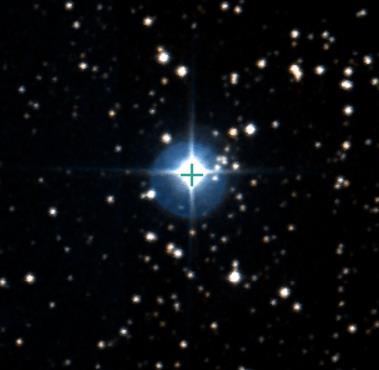Star of the Month
RR Lyrae
AKA: HIP 95497, SAO 48421. Position: 19 hrs 25.5 min 42 deg 47 min 04 sec
Due south at 00:49 (BST) on 16 July 2020
RR Lyrae
Image: Simbad (http://simbad.u-strasbg.fr/simbad/)
Several stars of the month so far have been variable stars and this month is no exception. RR Lyrae is one of the brightest members and the eponym of the class of variables known as RR Lyrae variables. These are old low mass stars, often associated with globular clusters, which are themselves old (as we mentioned in the Deep Sky Object for last month, M13). RR Lyrae has consumed all its hydrogen and is now fusing its helium. It therefore moved off the main branch and become a red giant, which as we have already seen are usually variable in magnitude. As a pulsating red giant, RR Lyrae displays a regular but not symmetrical pattern in its brightness, in which it rapidly reaches a peak and then slowly declines and then has an additional small dip before brightening up again. The change in magnitude is fairly small, from 8.1 at the very minimum to 7.1 at its peak, and the period between the peaks is short, only 13 hours 36 minutes. The RR Lyrae show a period-luminosity relationship (it is although less straight-forward than for the Cepheid variables) which allow them to be used as “standard candles” to measure astronomic distances. Incidentally it is not one of the variable stars regularly monitored by the BAA or the AAVSO. The variability of RR Lyrae was discovered in 1901 by the pioneering Scottish-American astronomer, Williamina Paton Fleming. Having been abandoned by her husband, she had become a housemaid to E. C. Pickering, the director of the Harvard University Observatory who, despairing of his male assistants, hired her as his first female assistant. She is best known for her discovery of the Horsehead Nebula in 1888. It is roughly half-way between Vega and Deneb, on the same line as Epsilon Lyrae (the famous double-double), and it is also between Delta Cygni and Eta Lyrae. However it is only magnitude 7.2 you will probably have to use GoTo to find it (most GoTo set-ups allow you to find stars by their SAO number).
